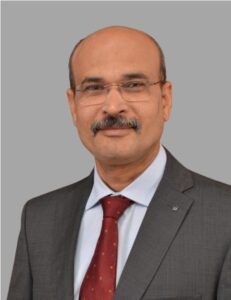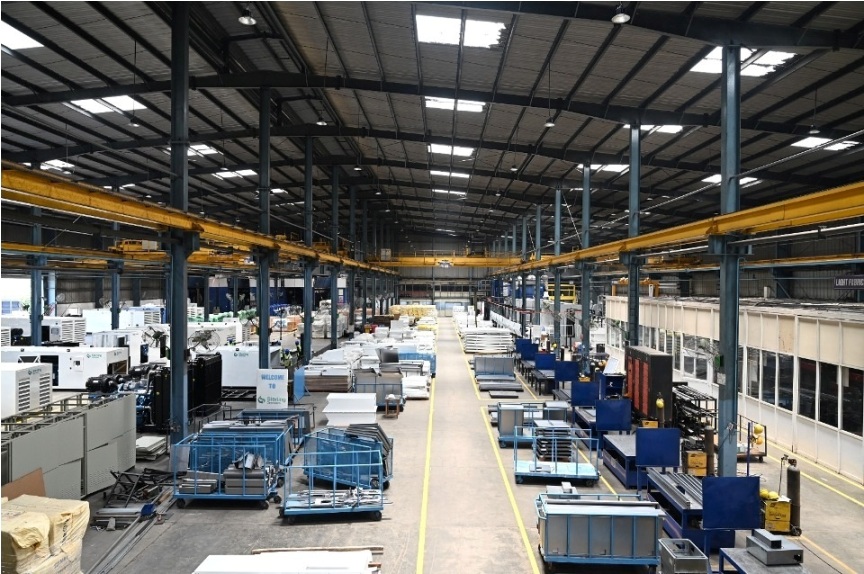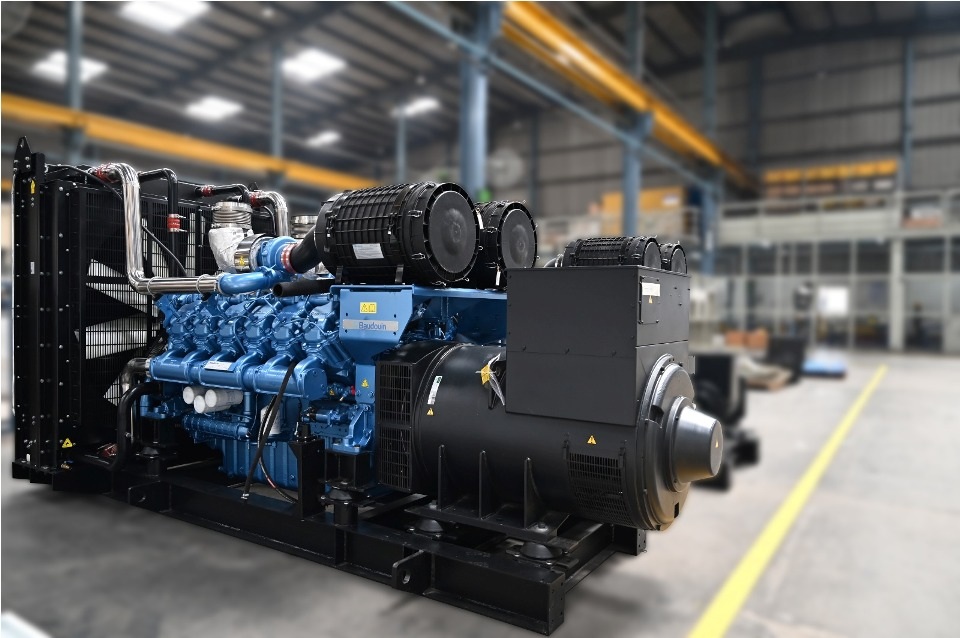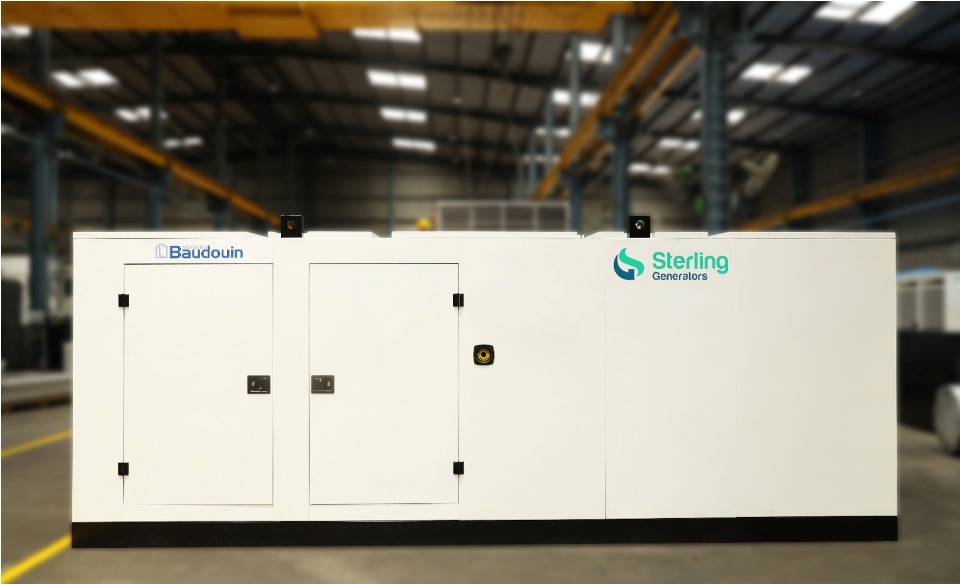Sterling Generators is optimistic about exports driving its overall business growth, according to Sanjay Jadhav, CEO, Sterling Generators Pvt Ltd.

At the sidelines of a recent conference in Pune marking the collaboration between Sterling Generators and Pi Green Innovations on the Retrofit Emission Control Device (RECD), Sanjay Jadhav told T&D India that the share of exports in the DG sets business of Sterling and Wilson is poised to grow significantly in the coming years.
Exports are expected to account for a share of 35-40 per cent in FY24, much higher than in FY23. From FY25 onwards, exports are poised to have a 50 per cent share in the overall genset business, the CEO noted.
In FY23, Sterling Generators had order bookings of Rs.510 crore that is expected to grow to Rs.750 crore – Rs.800 crore in the current year, FY24, In the first four months of FY24, order bookings have already crossed Rs.400 crore. Jadhav noted. “We might even reach Rs.1,000 crore of order inflows in FY24 but would certainly be in the Rs.750-800 crore range.”
Much of this optimism is based on the collaboration with French company Moteurs Baudouin that has been supplying its diesel engines to Sterling Generators for the past 18 months or so. Jadhav observed that Baudouin engines are made for use in rugged marine applications, which makes them an excellent choice for use in DG (diesel generator) sets.
Sterling Generators has tremendously improved its credibility in the global marketplace and is today regarded as being amongst the best companies for backup support for data centres. Baudouin engines have helped further cement the leadership position of Sterling Generators, Jadhav explained.
Dwelling more on the exports market, Sanjay Jadhav noted that key focus areas will be Africa, Middle East, South East Asia and Australia. The top official also observed that Baudouin has given Sterling Generators the mandate to operate in the global market. (Incidentally, Sterling Generators broke its agreement with its former engine supplier owing to several reasons; having to be restricted to the Indian market was one of them.)
“We have set up teams in the Middle East, Africa and Australia, and have already started operating in these markets,” noted Sanjay Jadhav. “There are also some emerging opportunities in Japan that we would like to explore.”
When asked about which user industries would dominate the exports business, “Data centres is a big focus,” Jadhav was quick to note. “Commercial real estate is another big area and so is IT-related services. These will our three focal areas. Majority requirement for high-rating DG-sets comes from these sectors.”

Market segmentation
The DG set market is differentiated in three broad categories on the basis of their horse power (HP) ratings – low (LHP), medium (MHP) and high (HHP). Sterling Generators predominantly operates in the HHP range (rating of 750 kVA and above) and enjoys an estimated 15-20 per cent domestic market share in this segment. As such, the company makes generators from 250 kVA all the way up to 4,000 kVA. Jadhav also mentioned that Sterling Generators was contemplating entering the LHP segment, catering to DG sets of rating below 250 kVA but exceeding 125 kVA. It may be mentioned that the DG set market in the sub-125 kVA segment is highly fragmented and often witnesses the involvement of the unorganized sector.
The data centre push
Sanjay Jadhav emphasized that data centres would drive demand for high-rating DG sets, both in India and worldwide. In fact, the global requirement of high-rating gensets for data centre application has already been booked for the next five years, Jadhav observed. “Sterling Generators has earned the distinction of being amongst the best companies for backup support for data centres. We have mastered the technology,” Jadhav reiterated in support of the company’s bright prospects in the exports market.
Emission control
When asked about the rationale of its collaboration with Pi Green Innovations for the RECD, Sanjay Jadhav explained that this was a means of making Sterling DG sets greener. DG sets also need to comply with evolving norms issued by Central Pollution Control Board (CPCB). CPCB IV norms, currently in vogue, are in line with the global Euro-V norms. States like Delhi, Tamil Nadu, Karnataka, Maharashtra and Uttar Pradesh have already issued notifications to comply with CPCB IV norms. All states are expected to follow suit over the next 1-2 years. With this, the need for controlling genset emissions will be mandatory and solutions like the RECD (retrofit emission control device) made in collaboration Pi Green Innovations will assume significance, Jadhav explained. He added that eventually all the 4,000-plus DG sets by Sterling Generators currently installed pan-India, will need RECD. In future, all DG sets of rating exceeding 1 mw will need RECD for complying with emission norms.
On the partnership with Pi Green Innovations, Sanjay Jadhav noted that the RECD made by Pi Green was preferred as it was a technically sound solution, and among other things, had no adverse bearing on the working of the DG set, per se. “The generator’s performance, even after the retrofit with RECD, remains intact.”

Substituting diesel
While DG sets are consciously going “green” through better internal design and retrofit solutions like RECD, the future fuel for gensets is hydrogen, Sanjay Jadhav projected. Though it would take at least 10 years from now for hydrogen gensets to make an appearance in India, the developed world would possibly see their advent much earlier.
However, what would be the cost-efficiency of hydrogen gensets? For one, the capital cost of a hydrogen genset would be at least four times that of DG sets, Jadhav noted. Further, given that gensets are standby or backup solutions, their use is always on an emergency basis, rather than on regular basis. Substantiating the point, Jadhav observed that in a city like Mumbai that has a high population of DG sets, the equipment is in active use for not more than 50 hours in a year!
Given this, it is difficult to say whether the genset owner would like to invest in a hydrogen-fired or even a gas-fired genset, purely for environmental reasons. “If you want to get real financial payback from gas or hydrogen gensets, you would need to run them 24×7,” was how Jadhav explained the predicament.
Also read: Sterling Generators Wins Rs.510 Crore Orders In FY23
New businesses
Sanjay Jadhav also mentioned that Sterling and Wilson, as a group, has announced its intention of entering new business verticals and that the Silvassa factory of Sterling Generators would be supporting these new ventures. Elaborating on the subject, Jadhav explained that DC (direct current) charging infrastructure and hydrogen electrolyzers would be some of the new ventures. “The Silvassa factory will have a lot of contribution to these businesses,” he stressed.
It may be mentioned that Sterling Generators, at its Silvassa plant, had a facility for producing LV power distribution systems (control panels). The company had commissioned marquee projects, including those for the Pune and Nagpur metro rail projects. However, Sterling Generators has since discontinued this line of activity as it was no longer in tune with the company’s emerging business goals. “We decided to stick to our core competence of gensets,” asserted Jadhav.



